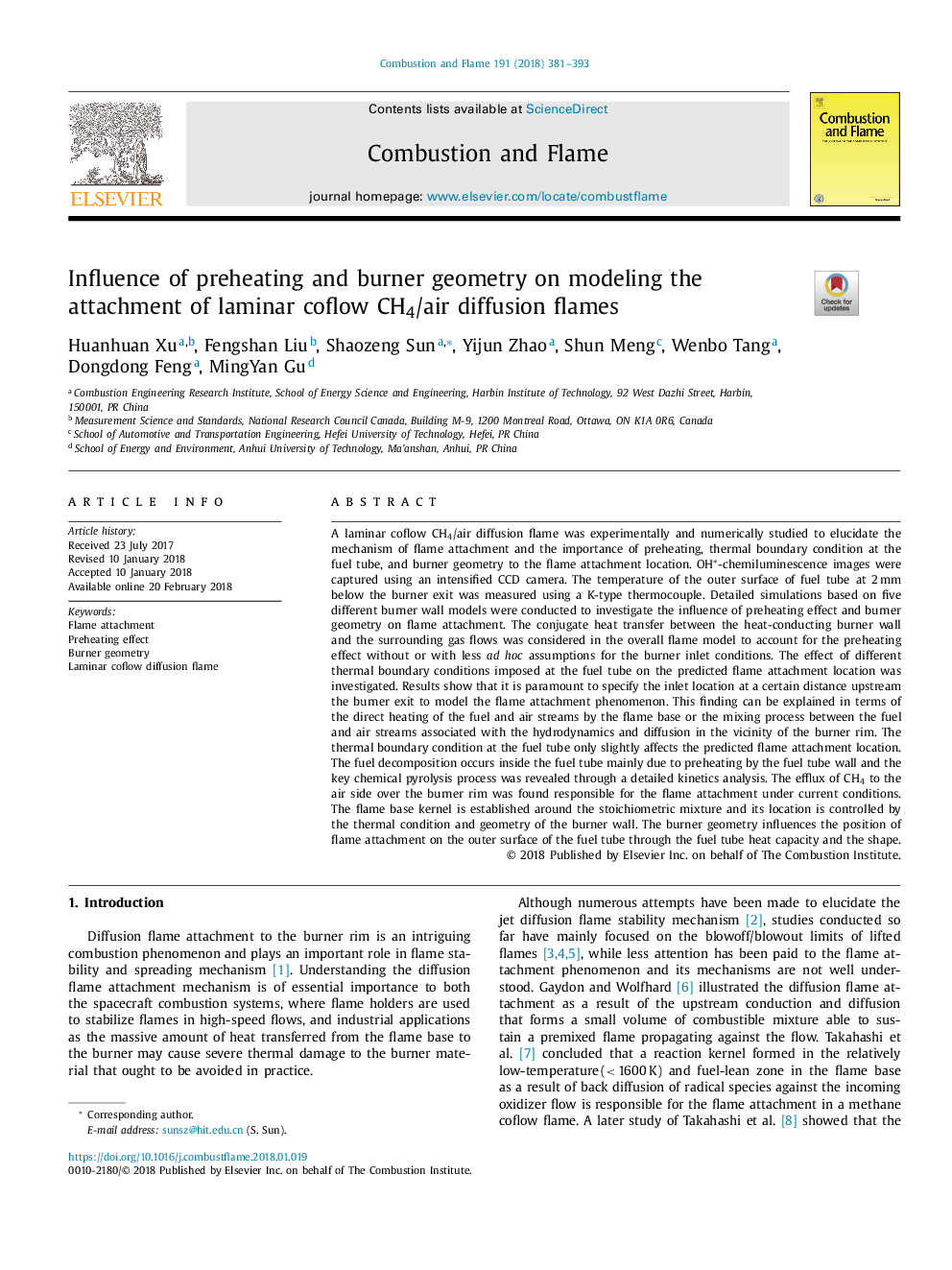| کد مقاله | کد نشریه | سال انتشار | مقاله انگلیسی | نسخه تمام متن |
|---|---|---|---|---|
| 6593767 | 1423546 | 2018 | 13 صفحه PDF | دانلود رایگان |
عنوان انگلیسی مقاله ISI
Influence of preheating and burner geometry on modeling the attachment of laminar coflow CH4/air diffusion flames
دانلود مقاله + سفارش ترجمه
دانلود مقاله ISI انگلیسی
رایگان برای ایرانیان
موضوعات مرتبط
مهندسی و علوم پایه
مهندسی شیمی
مهندسی شیمی (عمومی)
پیش نمایش صفحه اول مقاله

چکیده انگلیسی
A laminar coflow CH4/air diffusion flame was experimentally and numerically studied to elucidate the mechanism of flame attachment and the importance of preheating, thermal boundary condition at the fuel tube, and burner geometry to the flame attachment location. OH*-chemiluminescence images were captured using an intensified CCD camera. The temperature of the outer surface of fuel tube at 2â¯mm below the burner exit was measured using a K-type thermocouple. Detailed simulations based on five different burner wall models were conducted to investigate the influence of preheating effect and burner geometry on flame attachment. The conjugate heat transfer between the heat-conducting burner wall and the surrounding gas flows was considered in the overall flame model to account for the preheating effect without or with less ad hoc assumptions for the burner inlet conditions. The effect of different thermal boundary conditions imposed at the fuel tube on the predicted flame attachment location was investigated. Results show that it is paramount to specify the inlet location at a certain distance upstream the burner exit to model the flame attachment phenomenon. This finding can be explained in terms of the direct heating of the fuel and air streams by the flame base or the mixing process between the fuel and air streams associated with the hydrodynamics and diffusion in the vicinity of the burner rim. The thermal boundary condition at the fuel tube only slightly affects the predicted flame attachment location. The fuel decomposition occurs inside the fuel tube mainly due to preheating by the fuel tube wall and the key chemical pyrolysis process was revealed through a detailed kinetics analysis. The efflux of CH4 to the air side over the burner rim was found responsible for the flame attachment under current conditions. The flame base kernel is established around the stoichiometric mixture and its location is controlled by the thermal condition and geometry of the burner wall. The burner geometry influences the position of flame attachment on the outer surface of the fuel tube through the fuel tube heat capacity and the shape.
ناشر
Database: Elsevier - ScienceDirect (ساینس دایرکت)
Journal: Combustion and Flame - Volume 191, May 2018, Pages 381-393
Journal: Combustion and Flame - Volume 191, May 2018, Pages 381-393
نویسندگان
Xu Huanhuan, Liu Fengshan, Sun Shaozeng, Zhao Yijun, Meng Shun, Tang Wenbo, Feng Dongdong, Gu MingYan,